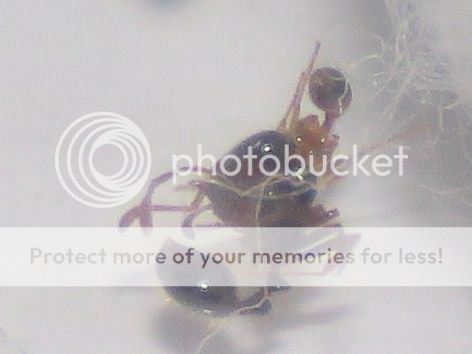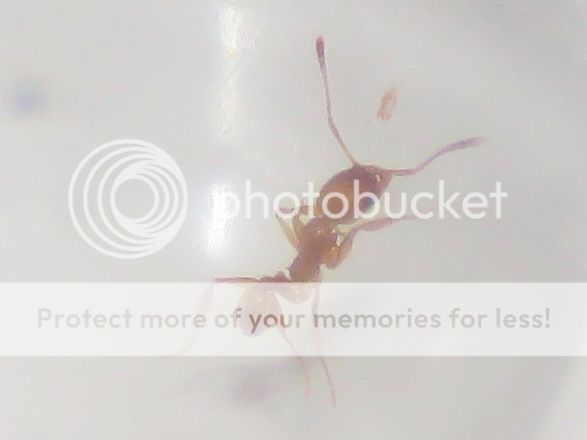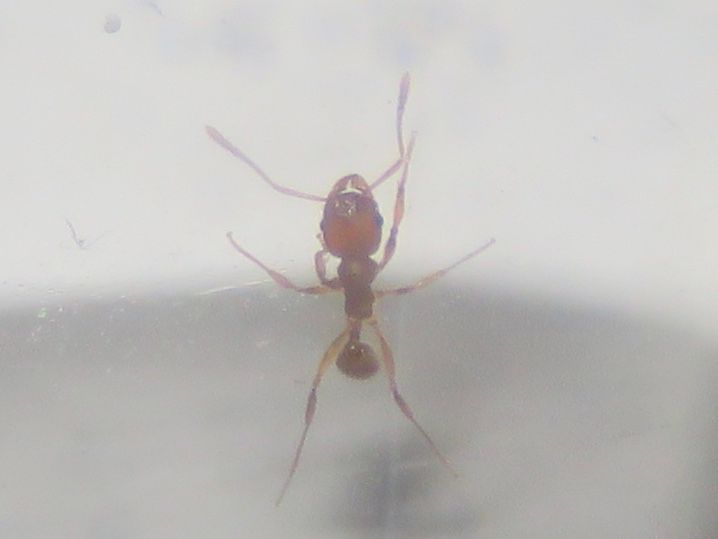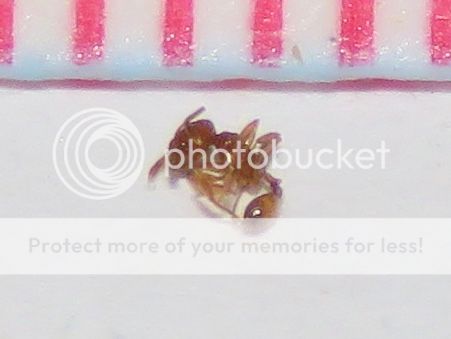Good afternoon,
Whilst having a wander this evening I came across a small nest with a mound 1 -2 inches across and a single entrance on a dirt road next to some scrubby jungle. There were hundreds of tiny workers (2-3mm) and a few larger (what I thought were) majors (4-5mm) around the entrance. Peacefully coexisting....
I scooped up a couple of the workers and a major into a test tube and brought it back to ID (I'm brand new to this so I'm checking everything I find, to see what I might end up with when nuptial flights start..)
Back at the house, magnifying glass in hand (after about 3/4 of an hour of happy and peaceful test tube co-existence) I turned back from the computer to find one of the workers riding the 'major' and viciously stinging it in the head... 'till dead.... Now I in my innocence thought I'd got some Pheidole sp. which was exciting, but I was unsure that this was normal Pheidole behavior (at this point I should point out that I'm color blind....)
My investigations took a different turn...at this point I'm going to apologize for the photos..I know that some of them are little more than silhouettes, but I don't have a macro lens, or even a DSLR and these ants were tiny..I did my best.
Now I'm pretty sure that Ant #1 (the 'major') is/was a Solenopsis sp. (invictus possibly, although the mandibles seem big and the antennae seem a little long)
ant#1

But the smaller ants have got me stumped.
The next photo is to give an idea of the relative sizes of the ants, I know there's no ID coming from this one.

So our psychotic worker has a head that is about twice the size of it's gaster, massive mandibles, crazy long antenna and is capable of riding and stinging Solenopsis (invicta???) to death....in the head.. (it was a little traumatic to see, I'm not going to lie)
Ant#2



I've been through the AntMaps site and the AntWiki page for each of the native Solenopsis to Quintana Roo and I can't nail it down, so even if you can't give me an ID then idea of some other keys that I can use would be great, or if it's not Solenopsis then I can wander off on my merry way and look at some other genera.
Thanks in advance
R

















